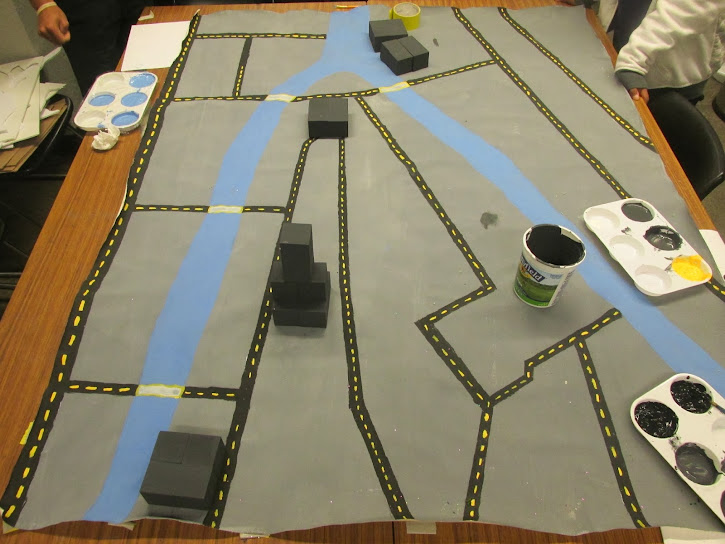This week each group of teens sat down and made a check list of what their group has to complete in order to better organize and assign jobs to everyone. After the lists were made we dove into construction and design of each group's activity or model.
 |
| Here the teens are sketching out their map for the Urban Development activity. |
The group making the Urban Development activity created their map by sketching the city of Pittsburgh onto some canvas and then painting it. They also created some easy to follow instructions of how to play the game as well as some fake money museum visitors will need to play the game. This group also came up with a cool slogan for their game which is, "turn the gray into green," meaning our traditional gray infrastructure needs a change toward more environmentally friendly green infrastructure.
The group responsible for the 3-D Watershed model finished constructing all of the elevation levels from foam and glued them together with cups in between to cause a bigger difference in the slope. Once everything was glued in place they then covered the whole thing with duct tape to prepare for the final stage: covering it in plaster.
 |
| Here the teens have started covering the model with the plaster that will make the model more realistic looking. |
The last group is in charge of making the main panel on the museum exhibit. This main panel will describe some of the problems the city of Pittsburgh currently has with their gray infrastructure as well as some solutions that are already being put in place around the city. The panel will also have a map of the Four Mile Watershed so the visitors will have a better spatial understanding of where the watershed is located. And finally this panel will have some facts about our watershed and how it works.
 |
| Here we are, hard at work, designing the main panel of our exhibit. |















